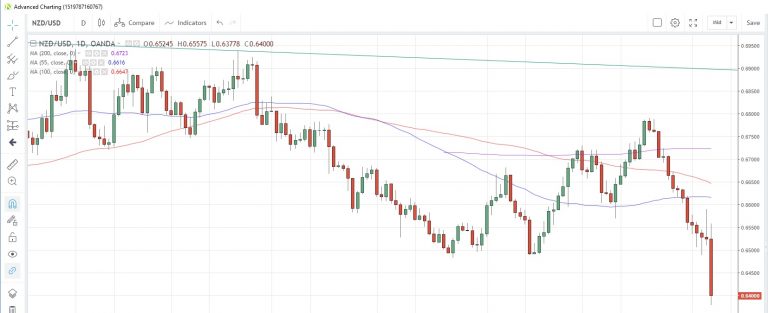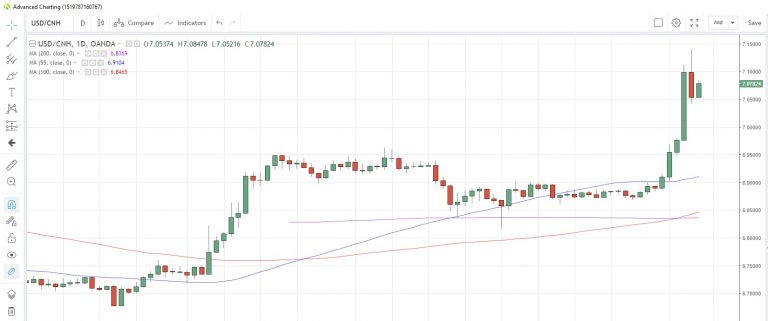NZD/USD at 3-1/2 year lows
The Reserve Bank of New Zealand slashed its benchmark rate by 50 bps to 1.0% at today’s meeting, a move that was not expected with most analysts forecasting a 25 bps cut. In a knee-jerk reaction, the New Zealand dollar tumbled across the board, losing 1.35% versus the US dollar to 0.6436 initially, a level not seen since October 9 last year, and the pair then subsequently slid to 0.6411, the lowest since January 2016.
In the accompanying statement, the central bank said the cut was necessary to “continue to meet its employment and inflation objectives”. It noted that GDP growth had slowed over the past year and headwinds are rising. Slowing global demand for New Zealand’s exports is having an impact on the economy but the Bank believes that low interest rates and increased government spending will support a pick-up in demand over the coming year.
Later, in the press conference, RBNZ Governor Orr said that today’s action to cut does not rule out any future action, which was the catalyst to push the kiwi to the day’s lows. Research notes published after the meeting are suggesting another 25 bps cut sometime in the fourth quarter to bring the official cash rate to 0.75%.

After the calm, has the next storm started?
The positive momentum that carried US stocks higher yesterday failed to materialize in Asia, with all Wall Street indices suffering between 0.66% and 0.85% losses during the morning session. Losses filtered through to other bourses, with the Japan225 index the under-performer with losses of 1.14%.
In the currency space, the Australian dollar took a hit, guilty by association with the New Zealand dollar, with AUD/USD sliding more than 1% to 0.6689 and AUD/JPY declining 0.1.19% to 70.92. European currencies were steady while USD/JPY slid 0.46% to 105.98 amid safe-haven yen buying.
USD/CNH traded generally firmer after the Peoples Bank of China raised the daily USD/CNY fix by 0.45% to 6.9996, a record high. USD/CNH failed to reach yesterday’s extreme high of 7.14 and is now trading at 7.0810

RBI not likely to copy RBNZ
Now that the excitement of the RBNZ meeting is out of the way, it is doubtful that the Reserve bank of India will be so extreme. Analysts are anticipating a 25 bps cut from the RBI, bringing the repo rate to 5.50%. This would be the fourth cut in the current easing cycle and would bring the benchmark rate to the lowest since 2010.
The rest of the data calendar is quite mundane, with German industrial production data for June and UK Halifax house prices for July on tap. A speech from ECB’s Coeure completes the European session and there are no major US data releases scheduled for today.
